Dissecting the economic impact of soybean diseases in the United States over two decades
- PMID: 32240251
- PMCID: PMC7117771
- DOI: 10.1371/journal.pone.0231141
Dissecting the economic impact of soybean diseases in the United States over two decades
Abstract
Soybean (Glycine max L. Merrill) is an economically important commodity for United States agriculture. Nonetheless, the profitability of soybean production has been negatively impacted by soybean diseases. The economic impacts of 23 common soybean diseases were estimated in 28 soybean-producing states in the U.S., from 1996 to 2016 (the entire data set consisted of 13,524 data points). Estimated losses were investigated using a variety of statistical approaches. The main effects of state, year, pre- and post-discovery of soybean rust, region, and zones based on yield, harvest area, and production, were significant on "total economic loss" as a function of diseases. Across states and years, the soybean cyst nematode, charcoal rot, and seedling diseases were the most economically damaging diseases while soybean rust, bacterial blight, and southern blight were the least economically damaging. A significantly greater mean loss (51%) was observed in states/years after the discovery of soybean rust (2004 to 2016) compared to the pre-discovery (1996 to 2003). From 1996 to 2016, the total estimated economic loss due to soybean diseases in the U.S. was $95.48 billion, with $80.89 billion and $14.59 billion accounting for the northern and southern U.S. losses, respectively. Over the entire time period, the average annual economic loss due to soybean diseases in the U.S. reached nearly $4.55 billion, with approximately 85% of the losses occurring in the northern U.S. Low yield/harvest/production zones had significantly lower mean economic losses due to diseases in comparison to high yield/harvest/production zones. This observation was further bolstered by the observed positive linear correlation of mean soybean yield loss (in each state, due to all diseases considered in this study, across 21 years) with the mean state wide soybean production (MT), mean soybean yield (kg ha-1), and mean soybean harvest area (ha). Results of this investigation provide useful insights into how research, policy, and educational efforts should be prioritized in soybean disease management.
Conflict of interest statement
The authors have declared that no competing interests exist.
Figures

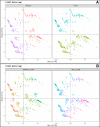

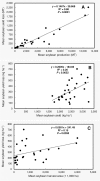
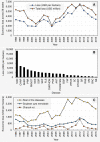
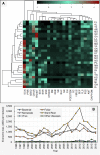

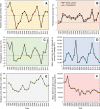
Similar articles
-
Modeling the relationship between estimated fungicide use and disease-associated yield losses of soybean in the United States I: Foliar fungicides vs foliar diseases.PLoS One. 2020 Jun 11;15(6):e0234390. doi: 10.1371/journal.pone.0234390. eCollection 2020. PLoS One. 2020. PMID: 32525917 Free PMC article.
-
Long-term trajectory of ozone impact on maize and soybean yields in the United States: A 40-year spatial-temporal analysis.Environ Pollut. 2024 Mar 1;344:123407. doi: 10.1016/j.envpol.2024.123407. Epub 2024 Jan 18. Environ Pollut. 2024. PMID: 38244900
-
Modeling the relationship between estimated fungicide use and disease-associated yield losses of soybean in the United States II: Seed-applied fungicides vs seedling diseases.PLoS One. 2020 Dec 28;15(12):e0244424. doi: 10.1371/journal.pone.0244424. eCollection 2020. PLoS One. 2020. PMID: 33370391 Free PMC article.
-
The Minderoo-Monaco Commission on Plastics and Human Health.Ann Glob Health. 2023 Mar 21;89(1):23. doi: 10.5334/aogh.4056. eCollection 2023. Ann Glob Health. 2023. PMID: 36969097 Free PMC article. Review.
-
From Select Agent to an Established Pathogen: The Response to Phakopsora pachyrhizi (Soybean Rust) in North America.Phytopathology. 2015 Jul;105(7):905-16. doi: 10.1094/PHYTO-02-15-0054-FI. Epub 2015 Jul 1. Phytopathology. 2015. PMID: 25775102 Review.
Cited by
-
Molecular interactions between the soilborne pathogenic fungus Macrophomina phaseolina and its host plants.Front Plant Sci. 2023 Sep 14;14:1264569. doi: 10.3389/fpls.2023.1264569. eCollection 2023. Front Plant Sci. 2023. PMID: 37780504 Free PMC article. Review.
-
Cyanobacterium Nostoc species mitigate soybean cyst nematode infection on soybean by shaping rhizosphere microbiota.Front Microbiol. 2025 May 8;16:1544479. doi: 10.3389/fmicb.2025.1544479. eCollection 2025. Front Microbiol. 2025. PMID: 40406346 Free PMC article.
-
Nematocidal Potential of Phenolic Acids: A Phytochemical Seed-Coating Approach to Soybean Cyst Nematode Management.Plants (Basel). 2024 Jan 21;13(2):319. doi: 10.3390/plants13020319. Plants (Basel). 2024. PMID: 38276776 Free PMC article.
-
Ecology and diversity of culturable fungal species associated with soybean seedling diseases in the Midwestern United States.J Appl Microbiol. 2022 May;132(5):3797-3811. doi: 10.1111/jam.15507. Epub 2022 Mar 8. J Appl Microbiol. 2022. PMID: 35226387 Free PMC article.
-
Identification of the Complex Interplay Between Nematode-Related lncRNAs and Their Target Genes in Glycine max L.Front Plant Sci. 2021 Dec 10;12:779597. doi: 10.3389/fpls.2021.779597. eCollection 2021. Front Plant Sci. 2021. PMID: 34956274 Free PMC article.
References
-
- Hartman GL, West ED, Herman TK. Crops that feed the World 2. Soybean worldwide production, use, and constraints caused by pathogens and pests. Food Secur. 2011; 3:5–17.
-
- Ali N. Soybean processing and utilization In: Singh G (Ed.), The Soybean: Botany, Production and Uses. CAB International, Cambridge, MA; 2010, pp 345–374.
-
- Liu K. Food use of whole soybeans In: Johnson LA, White PJ, Galloway R. (Eds.), Soybeans: Chemistry, production, processing, and utilization. Urbana, IL: American Oil Chemists' Society Press; 2008, pp 441–482.
-
- Goldsmith P. 2008. Economics of soybean production, marketing, and utilization In: Johnson, White PJ, Galloway R. (Eds.), Soybeans: Chemistry, production, processing, and utilization. Urbana, IL: American Oil Chemists' Society Press; 2008, pp 117–150.
Publication types
MeSH terms
LinkOut - more resources
Full Text Sources
Other Literature Sources
Research Materials

